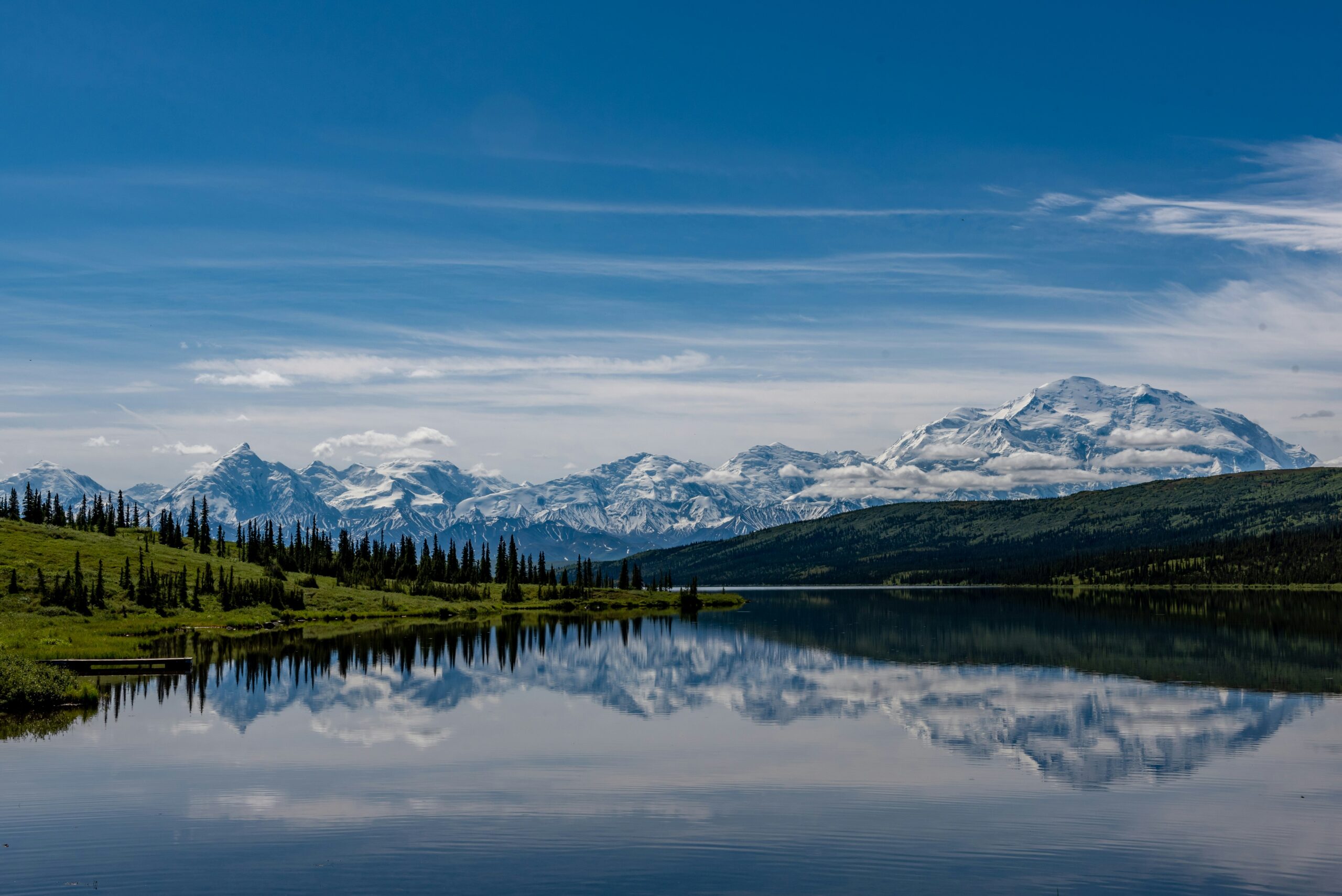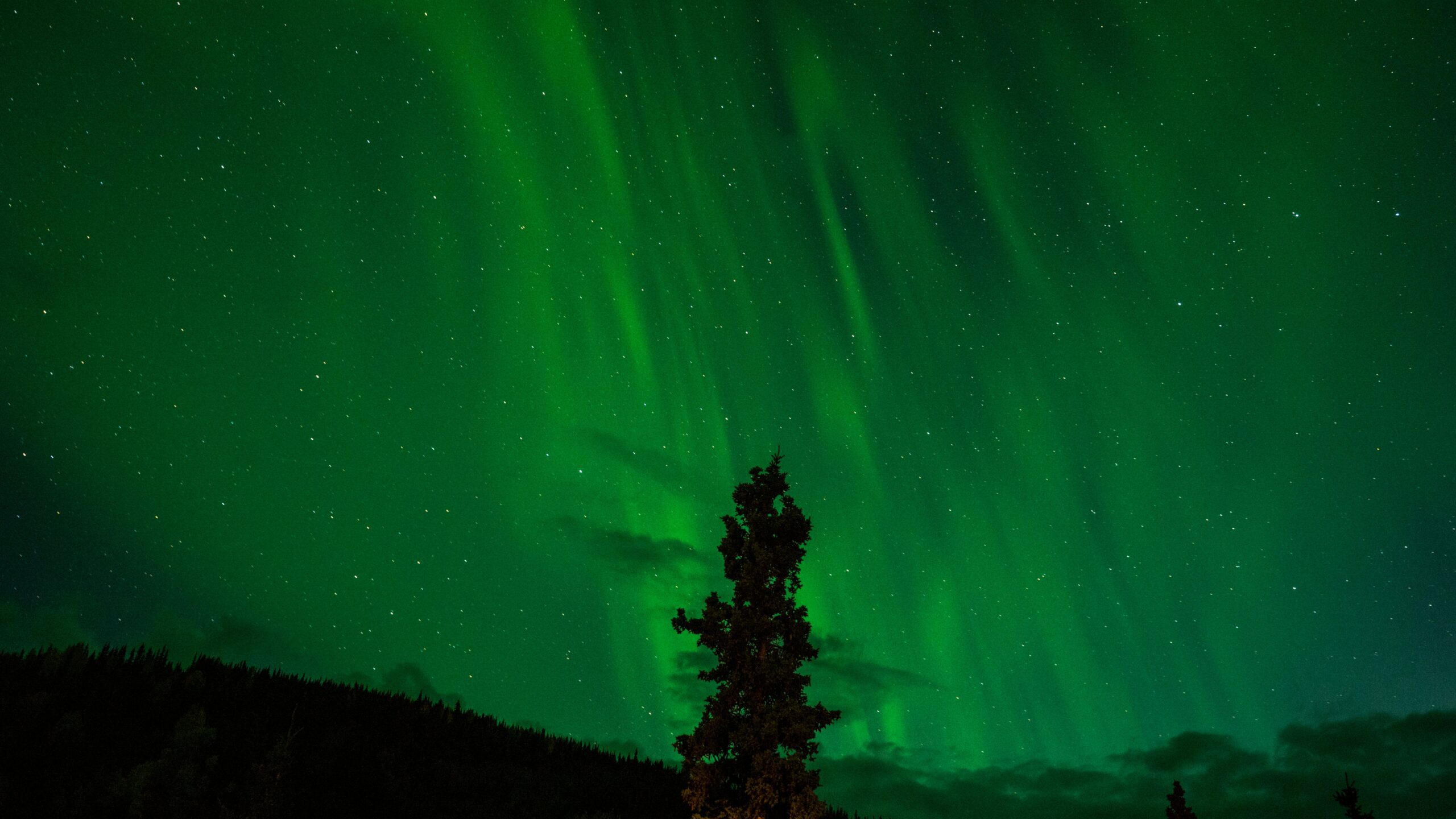Discover Denali National Park
Nestled in the heart of Alaska’s untamed wilderness lies a treasure trove of natural beauty and adventure: Denali National Park. Encompassing over six million acres of pristine landscape, this iconic park is home to North America’s tallest peak, Denali, formerly known as Mount McKinley. Renowned for its rugged terrain, abundant wildlife, and breathtaking vistas, Denali National Park beckons outdoor enthusiasts, nature lovers, and adventurers alike to explore its majestic wonders.
Established in 1917 as Mount McKinley National Park and later renamed Denali National Park and Preserve in 1980, this sprawling expanse of protected wilderness offers visitors a rare opportunity to immerse themselves in the raw, unspoiled beauty of Alaska’s interior. From towering mountains cloaked in snow and ice to vast expanses of tundra teeming with life, Denali presents a tableau of natural splendor unlike any other.
Beyond its towering peaks, Denali National Park is renowned for its diverse array of wildlife, including grizzly bears, wolves, moose, caribou, and Dall sheep. Wildlife enthusiasts will delight in the opportunity to observe these majestic creatures in their natural habitat, as they roam freely across the park’s vast expanse.
Whether you seek the thrill of conquering North America’s highest peak or the serenity of communing with nature in its purest form, Denali National Park promises an unforgettable adventure amid the untamed beauty of Alaska’s wilderness.
Top 3 Facts About Denali National Park
01
North America’s Tallest Peak
Denali National Park is renowned for being home to Denali, formerly known as Mount McKinley, which stands at a staggering height of 20,310 feet above sea level. This makes it the tallest peak in North America, attracting climbers and adventurers from around the world seeking to conquer its formidable slopes.
02
Massive Wilderness Area
Encompassing over six million acres of pristine wilderness, Denali National Park offers vast expanses of unspoiled terrain to explore. From towering mountains and glaciers to expansive tundra and boreal forests, the park’s diverse landscapes provide habitat for a wide array of wildlife and offer endless opportunities for outdoor adventure.
03
Unique Roadway
Denali National Park features the Denali Park Road, a 92-mile stretch of gravel road that winds its way through the park’s wilderness, offering stunning views of Denali and the surrounding landscape. While private vehicles are only allowed on the first 15 miles of the road, visitors can access the entire length of the road by shuttle bus or tour bus, providing opportunities for wildlife viewing and exploration.
Camping and transportation in Denali National Park
How to Get to Denali National Park
Getting to Denali National Park typically involves traveling to the state of Alaska and then making your way to the park’s entrance. Here’s a general guide on how to get there:
- By Air: The closest major airport to Denali National Park is Ted Stevens Anchorage International Airport (ANC) in Anchorage, Alaska. From Anchorage, you can then take a connecting flight to Fairbanks International Airport (FAI), which is closer to the park. Many visitors opt to rent a car in Anchorage or Fairbanks to drive to Denali, or they can take a shuttle bus or train.
- By Car: If you’re driving from Anchorage or Fairbanks, you can take the George Parks Highway (Alaska Route 3) to reach the park’s entrance. The drive from Anchorage to the park entrance typically takes about 4-5 hours, while the drive from Fairbanks takes around 2-3 hours.
- By Train: The Alaska Railroad offers scenic train service between Anchorage and Fairbanks, with a stop at the Denali National Park entrance. The Denali Star train operates daily during the summer season, providing passengers with stunning views of the Alaskan wilderness along the way.
- By Bus: Several companies offer bus tours and transportation services to Denali National Park from Anchorage and Fairbanks. These guided tours typically include transportation to and from the park, as well as opportunities for sightseeing and wildlife viewing along the way.
Places to Stay Near Denali National Park
There are several campgrounds near Denali National Park where visitors can enjoy the beauty of the Alaskan wilderness. Here are a few options:
- Riley Creek Campground: Located near the entrance of Denali National Park, Riley Creek Campground offers tent and RV camping sites with facilities such as restrooms, showers, and a dump station. It’s a convenient option for those exploring the park’s entrance area and is within walking distance of the park visitor center and various hiking trails.
- Savage River Campground: Situated deeper into Denali National Park, Savage River Campground offers a more secluded camping experience amidst stunning wilderness scenery. This campground provides tent-only sites and is a popular basecamp for hikers exploring the Savage River area and beyond.
- Teklanika River Campground: For those seeking a more remote camping experience, Teklanika River Campground is an excellent option. Located approximately 29 miles into the park along the Denali Park Road, this campground offers tent and RV sites accessible by reservation only. Visitors must have a minimum three-night stay and are required to use the park’s shuttle buses for transportation to and from the campground.
- Wonder Lake Campground: Situated near the end of the Denali Park Road, Wonder Lake Campground offers stunning views of Denali and is an ideal spot for photography enthusiasts. This campground is only accessible by reservation and requires a minimum two-night stay. Facilities are limited, with vault toilets available, but no running water or showers.
Driving
Within Denali National Park, private vehicles are restricted beyond the first 15 miles of the Denali Park Road. This regulation helps preserve the wilderness experience and minimizes human impact on the park’s ecosystem. However, visitors can explore the park’s interior by using the park’s shuttle buses or by participating in guided bus tours.
Public
Denali National Park operates a shuttle bus system that serves as the primary form of public transportation within the park. The shuttle buses provide visitors with access to various points along the Denali Park Road, allowing them to explore the park’s interior without the need for private vehicles.
Parking
Within Denali National Park, there are limited parking facilities available primarily near the park entrance area. Visitors driving private vehicles can park at designated parking lots near the visitor center, Wilderness Access Center, and various other facilities at the park entrance.
Best Time to Go to Denali National Park
Summer
Summer is the peak visitor season in Denali National Park, and for good reason. With long daylight hours and milder temperatures, this season offers optimal conditions for exploring the park’s vast wilderness.
The Denali Park Road is fully open, allowing visitors to venture deep into the park and experience its stunning landscapes and abundant wildlife. Hiking trails are accessible, offering opportunities to witness breathtaking vistas, cascading waterfalls, and pristine alpine meadows. However, summer also brings larger crowds and increased competition for campground reservations and shuttle bus seats, so visitors should plan and book accommodations and activities well in advance.
Winter
Winter transforms Denali National Park into a serene and magical wonderland, blanketed in snow and bathed in the soft glow of the northern lights. While the park’s facilities are largely closed to visitors during the winter months, adventurous travelers can still experience its beauty through activities such as cross-country skiing, snowshoeing, and winter photography.
Wildlife sightings are less common during this season, but visitors may have the chance to spot elusive creatures such as lynx, wolves, and ptarmigan against the backdrop of the snowy landscape. With fewer visitors and the opportunity for unique winter experiences, such as dog sledding and aurora viewing, winter offers a truly unforgettable way to experience the tranquility and solitude of Denali National Park.
Spring
Spring in Denali National Park brings a sense of renewal as the landscape awakens from the winter slumber. April marks the end of winter, with lingering snow gradually giving way to the vibrant colors of emerging foliage and blooming wildflowers.
This season offers a quieter and less crowded experience, making it ideal for those seeking solitude and tranquility. Wildlife begins to stir, with opportunities to spot newborn animals and witness the return of migratory birds. However, travelers should be prepared for unpredictable weather, including lingering snow at higher elevations and rapidly changing conditions.
Fall
Fall in Denali National Park is a time of transition, as the landscape transforms into a palette of vibrant autumn colors. The tundra and boreal forests come alive with hues of gold, crimson, and orange, creating a breathtaking backdrop for outdoor adventures. September marks the onset of cooler temperatures and shorter daylight hours, but visitors can still enjoy hiking, wildlife viewing, and photography amidst the stunning fall foliage.
This season also offers opportunities to witness the spectacle of wildlife preparing for winter, including the annual moose rut and the migration of caribou. While the weather can be variable, with the possibility of early snowfall at higher elevations, fall is generally a quieter and more peaceful time to visit Denali National Park, with fewer crowds and ample opportunities for solitude and reflection.
Must-See Attractions
Helpful Tips: Making the Most of Your Adventure to Denali National Park
Plan Ahead
Denali National Park is vast, and its attractions can be spread out. Research the park’s attractions, activities, and facilities in advance, and consider creating an itinerary to make the most of your time.
Dress in Layers
Weather in Denali National Park can be unpredictable, with temperatures varying widely throughout the day. Dress in layers and bring waterproof clothing to stay comfortable in changing conditions.
Stay Bear Aware
Denali is bear country, so familiarize yourself with bear safety protocols and carry bear spray if hiking in bear habitat. Make noise while hiking to avoid surprising bears, and properly store food to prevent attracting them to campsites.
Be Flexible
Weather conditions, wildlife sightings, and road closures can all affect your plans in Denali. Maintain flexibility in your schedule and be prepared to adapt to changing circumstances for a more enjoyable experience.


Frequently Asked Questions about Denali National Park
The best time to visit Denali National Park is typically from mid-May to mid-September, during the park’s summer season when the weather is milder, wildlife is abundant, and most facilities and attractions are open.
Private vehicles are restricted beyond the first 15 miles of the Denali Park Road. To explore deeper into the park, visitors must use the park’s shuttle bus system or participate in guided bus tours.
Yes, Denali National Park offers several campgrounds for tent and RV camping, including Riley Creek Campground near the entrance and more remote options like Teklanika River Campground and Wonder Lake Campground deeper into the park.
Denali is home to a diverse array of wildlife, including grizzly bears, wolves, moose, caribou, Dall sheep, bald eagles, and more. Wildlife viewing opportunities abound throughout the park, especially along the Denali Park Road.
Yes, Denali National Park offers opportunities for viewing the northern lights, especially during the winter months when the nights are longer and darker. However, sightings are not guaranteed and depend on solar activity and weather conditions.
Visitors to Denali should pack appropriate clothing for variable weather conditions, including layers, rain gear, sturdy footwear for hiking, and bear safety gear if venturing into bear habitat. Other essentials include water, snacks, sunscreen, insect repellent, and a camera for capturing the park’s stunning scenery and wildlife.